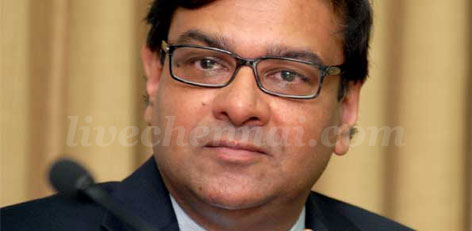Experts feel RBI will further cut interest rates
Posted on: 05/Dec/2016 4:01:55 PM

Experts believe that Reserve Bank Governor Urjit Patel is expected to again go in for a 0.25 per cent interest rate cut at its next policy review on Wednesday, with an aim to cushion the impact of demonetization. Incidentally, this will be the first monetary policy review after demonetisation of old Rs 500 and Rs 1,000 currency notes following which banks witnessed surge in deposits. In his first policy, Mr. Patel reduced the repo rate, which is the short term lending rate, by 0.25 per cent to 6.25 per cent.
According to experts, With softening of inflation, we expect that RBI may go for a 25-basis point rate cut in the upcoming policy. The central bank would ease the repo rate to 6 per cent. The new two quarters are very important and they would like to see the impact of demonetization.
Banks agree. Leading banks in the country have said, The temporary hike in CRR due to high deposits with banks is not a concern, but RBI should cut repo by 0.25 per cent to 6 per cent in next policy review in December to adjust balance between high liquidity and interest rates. There is an expectation that the inflation in November will be below 4 per cent. In October, retail inflation was at 4.20 per cent while wholesale inflation eased to 3.39 per cent.
Senior bank officials say, Also, the recent demonetisation will support easing inflation by affecting consumer demand adversely. Hence, we are still expecting another round of repo rate cut by 25-50 basis points, 0.25-0.50 per cent, in 2016-17. Despite the cash reserve ratio, CRR, hike, the systemic liquidity will still be in a comfortable surplus of over Rs 1.5 lakh crore. RBI may revise its 2016-17 GDP growth forecast substantially from 7.6 per cent earlier and cut repo rate by 25 bps repo to arrest the downside risks to growth.
Industry experts feel, As the process of demonetisation has created tremendous liquidity, at this juncture, RBI should cut repo rate in line with cut in deposit rates in the policy. Industry, businesses and people are facing the impact of higher interest rates for the last many years.







